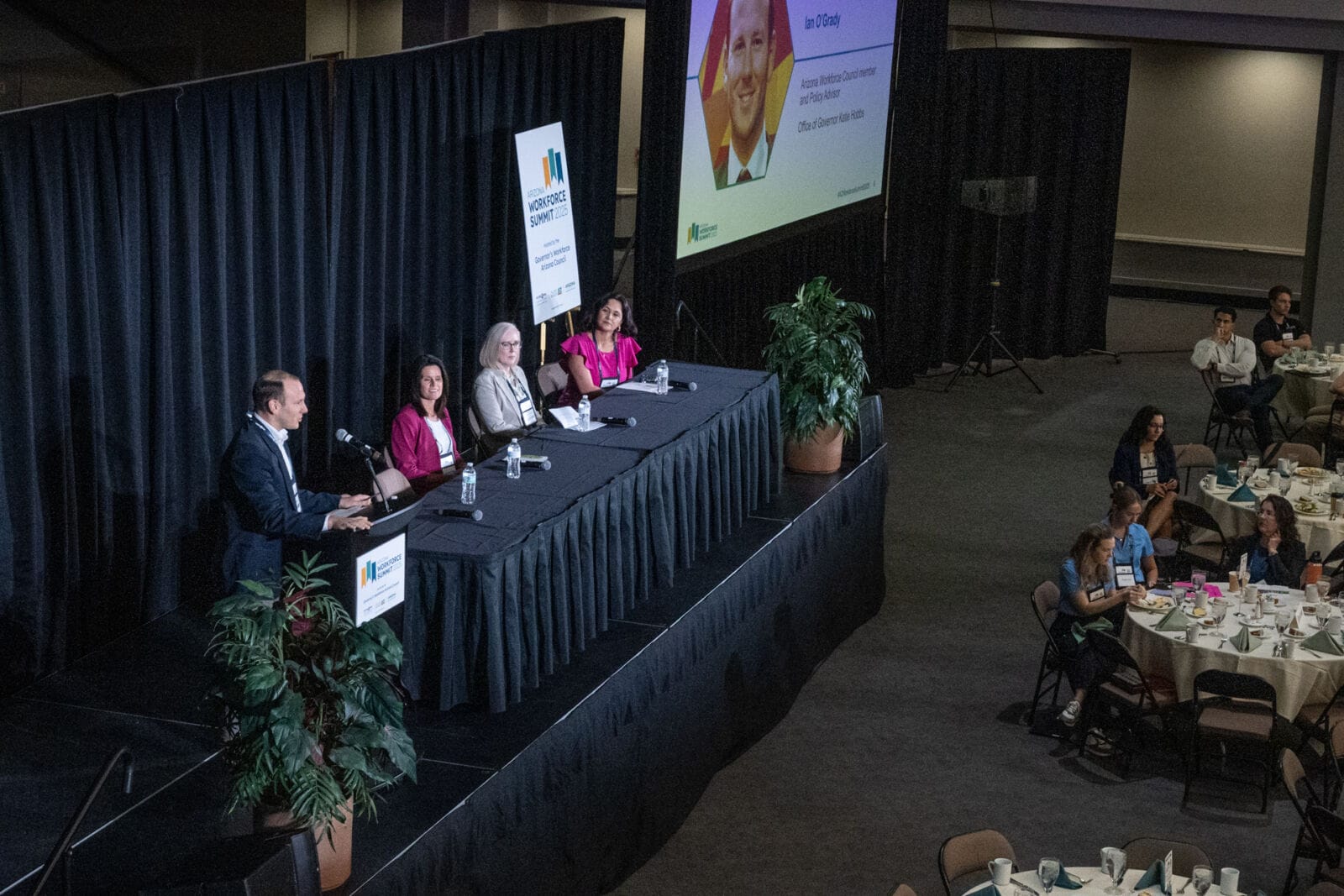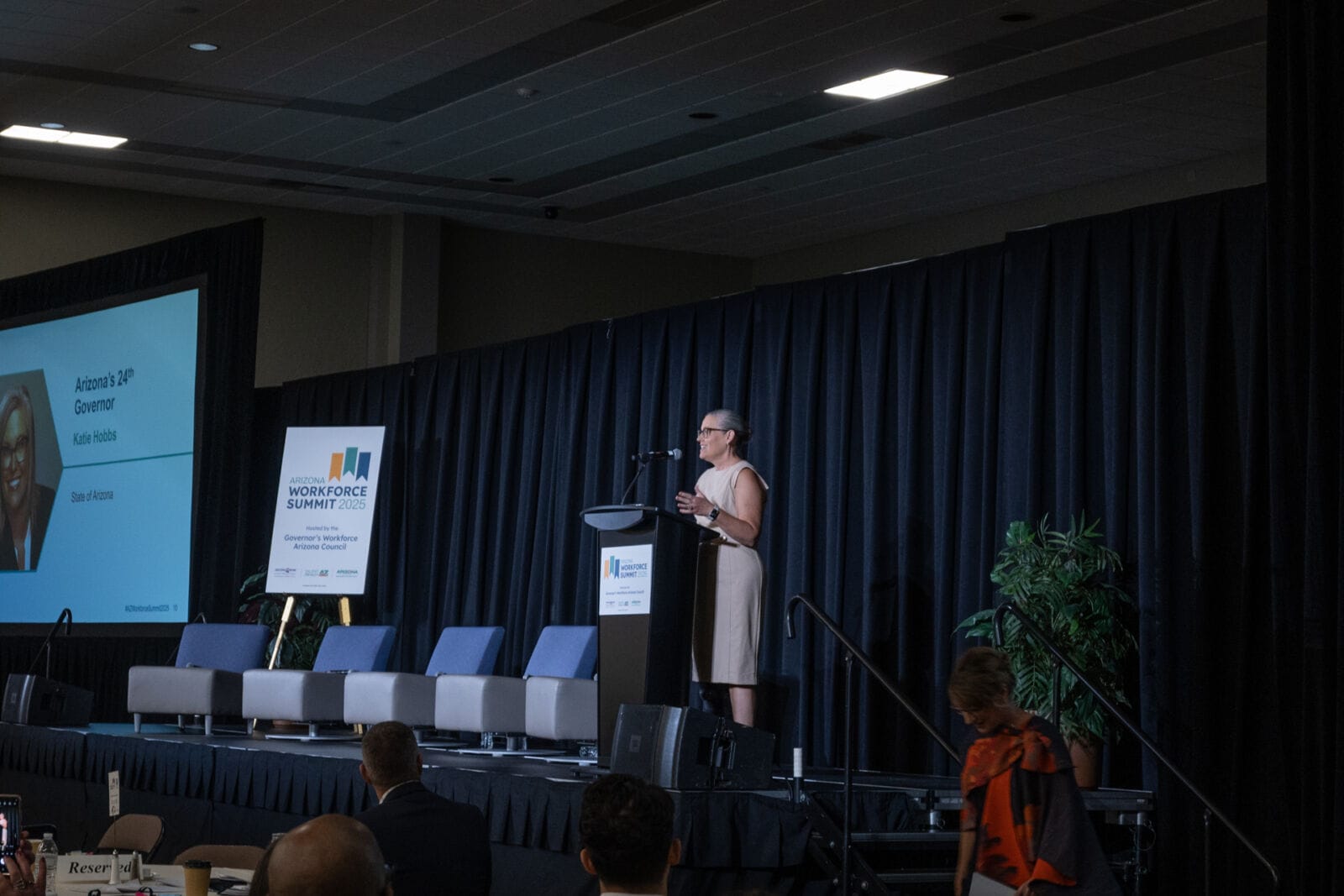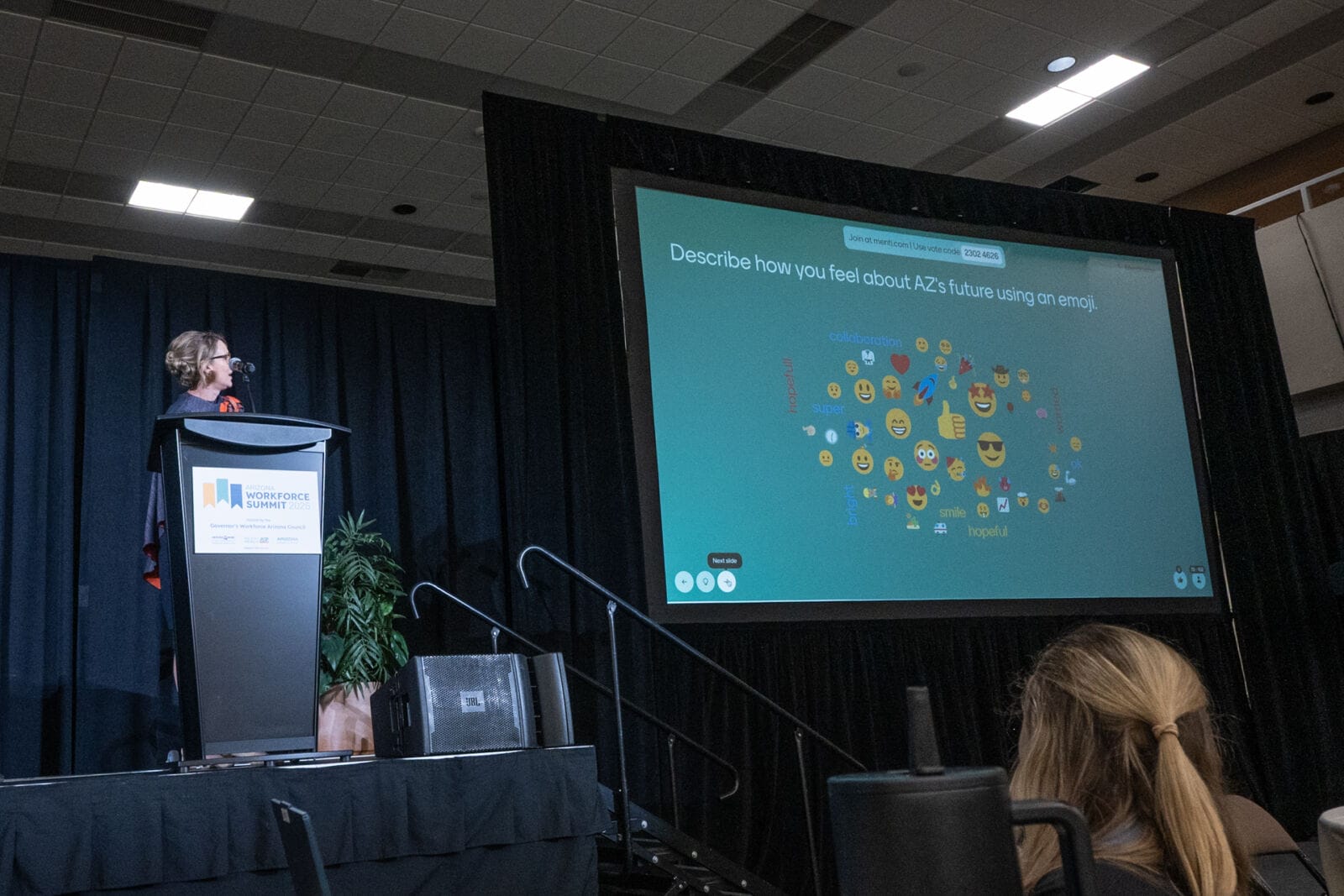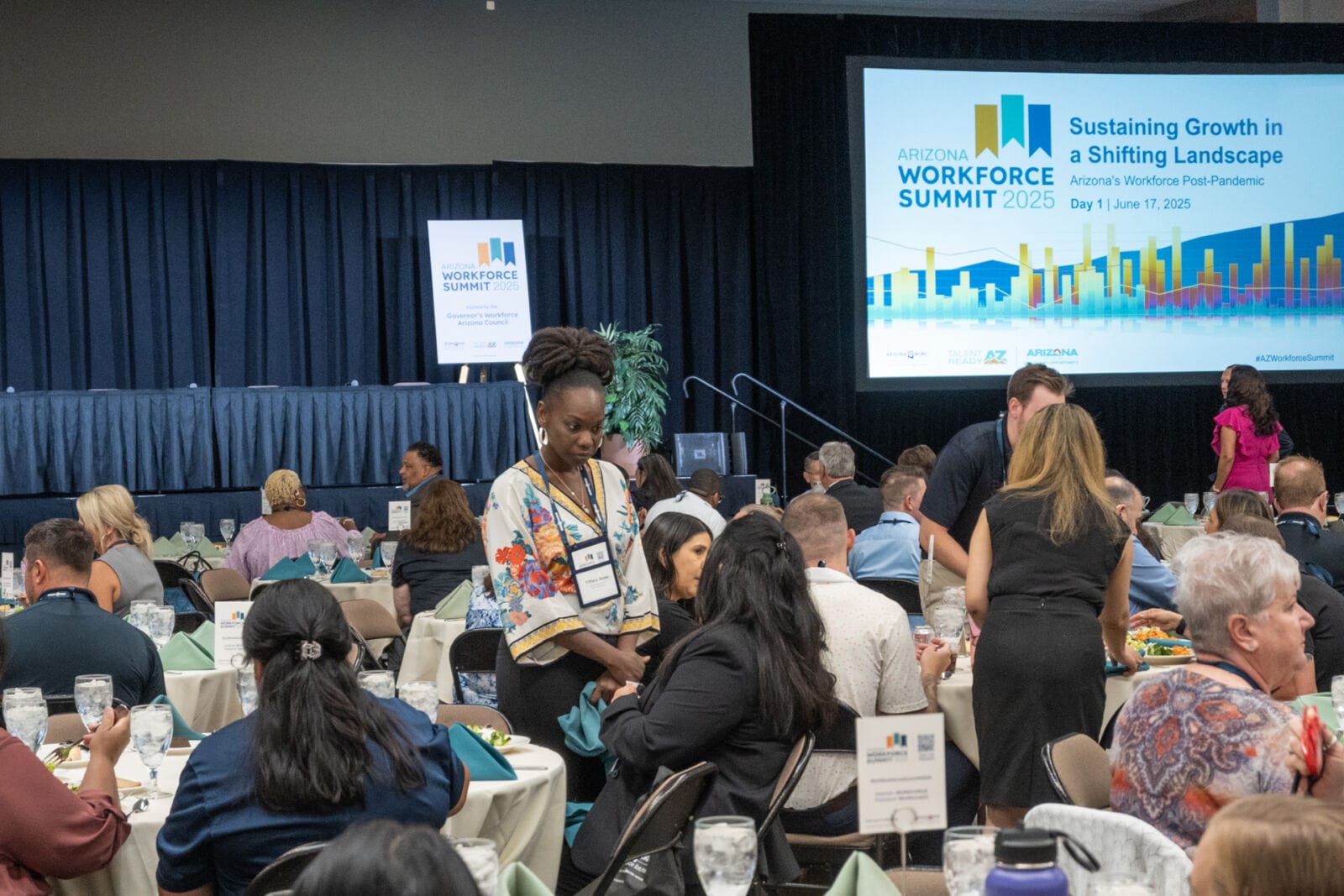The Arizona Office of Economic Opportunity (OEO), Arizona’s workforce coordination agency, brought together over 400 business leaders, workforce development professionals, and labor market and demographic experts at its Arizona Workforce Summit 2025, the largest workforce summit hosted by OEO to date. The two-day free event, hosted by OEO, the Governor Hobbs’ Workforce Arizona Council, and the Talent Ready AZ Initiative, sparked conversations among the state’s top elected officials, industry partners, educators, community leaders and workforce leaders on advancing economic opportunity in Arizona.
LOCAL NEWS: 100 best places to work and live in Arizona for 2025
INDUSTRY INSIGHTS: Want more news like this? Get our free newsletter here
“Realizing the Arizona Promise means creating pathways to economic opportunity for every Arizonan,” said Governor Katie Hobbs. “The Arizona Workforce Summit brings together important partners to strengthen our talent pipeline and build a skilled workforce that meets the needs of our state. My administration will continue to invest in Arizona families by helping them access good-paying jobs in critical industries.”
The summit fostered partnerships between government, industry, and education to create pathways to high-quality jobs. Participants gained insights into economic trends that are shaping Arizona’s workforce future. Sessions highlighted Governor Hobbs’ workforce agenda and provided actionable strategies for businesses to attract and retain talent across the state.
Since emerging from the pandemic, Arizona has grown, adding 616,000 jobs, a 23% increase over five years. Looking forward, OEO projects Arizona to add another 480,000 jobs by 2033, an annual clip of 1.3%, which is triple the national pace.
Population growth has matched that momentum: +460,000 residents (+6 %) between April 2020 and July 2024, which placed Arizona as the 7th fastest growing state in the nation. The labor market remains tight with unemployment at 4.1% (April 2025) and the workforce expanding 1.4% year-over-year. Still, there is room to improve. Arizona’s per-capita personal income sits at roughly $64,400, about 89% of the U.S. average and 36th among states.
This growth stems from emerging economic opportunities across urban, rural and tribal communities. OEO’s economic data and labor market insights are equipping leaders across Arizona with the actionable intelligence needed to sustain this growth trajectory through targeted workforce initiatives, strategic education partnerships, and innovative training programs aligned with industry demands.
“This statewide summit comes at a pivotal moment for Arizona’s economy as we build on five years of post-pandemic growth,” said Arizona Office of Economic Opportunity Director Carlos Contreras. “Our data-driven approach enables decision-makers to identify emerging trends and opportunities in real time. By bringing together elected and local officials, key stakeholders from government, industry, and education, we’re creating an environment where these insights translate into concrete strategies that ensure every Arizonan has access to economic opportunity.”
The summit featured keynote presentations, expert panels, and interactive sessions focused on critical topics including Arizona’s changing workforce demographics, industry-specific talent needs, and funding opportunities for workforce strategies. Speakers included Beth Jarosz, Demographer & Senior Program Director at Population Reference Bureau; Jim Rounds, Rounds Consulting Group; Jennifer Mellor, Chief Innovation Officer, Greater Phoenix Chamber of Commerce; Karla Morales, Vice President of Arizona Technology Council; Jenna Rowell, Director of Rural Development, Local First Arizona; Kerry McKittrick, Co-Director of the Harvard Project on Workforce; Jack Porter, National Governors Association; Melinda Morrison Gulick, CEO of First Things First; and Daniel Barajas, Chief Officer of Workforce & Economic Development Strategy at MCCCD.
Summit Agenda Highlights
- Day 1
- Building Arizona’s Talent Ready Workforce for the Future: Regional Perspectives – Exploring workforce development strategies across Arizona’s diverse regions
- Economic & Demographic Trends Shaping Arizona’s Future – Analysis of population shifts and economic forecasts impacting workforce planning
- Is Child Care a Key to Arizona’s Workforce & Economic Success? – Examining the critical role of childcare access in workforce participation
- Networking Reception – sponsored by Maricopa Community Colleges Foundation
- Day 2
- Coffee & Conversation with Local Elected Officials – Discussion on economic and workforce landscape challenges with urban and rural Mayors and elected leaders including Phoenix Mayor Kate Gallego and Casa Grande Mayor Lisa Fitzgibbons, and Gila County Supervisor Woody Cline
- Remarks from Governor Katie Hobbs
- Governors Reshaping Workforce Development – Strategies for turning WIOA challenges into workforce solutions
- WIOA Challenges and Local Workforce Board Leader Perspectives – Insights from frontline workforce development professionals
- Insight to Action Workshop – Implementing successful healthcare workforce models across Arizona
- ARIZONA@WORK Success Stories – Showcasing people and programs making an impact
- Bridging Education and Employment – Illuminating workforce outcomes with integrated longitudinal data
- Reentry 2030 – Breaking barriers and building futures for justice-impacted individuals
- Data to Decisions – Using population and employment trends to drive workforce strategy
- High Impact Training – The next step in empowering participant choice for ARIZONA@WORK adult training programs
- Sector Strategies in Action – Community college partnerships for in-demand jobs
Approximately 400 people attended the event each day, June 17 and 18, 2025 at the Mesa Convention Center. To learn more about OEO’s data reporting and collection and initiatives visit www.oeo.az.gov.










